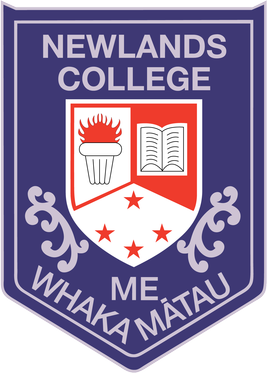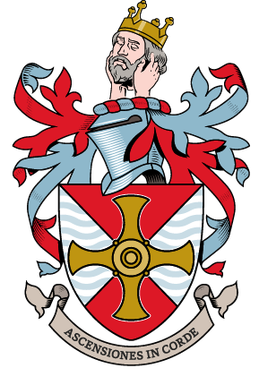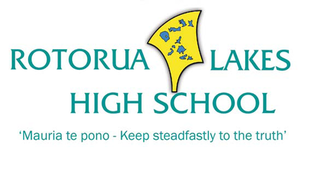
Haka are a variety of ceremonial dances in Māori culture. A performance art, haka are often performed by a group, with vigorous movements and stamping of the feet with rhythmically shouted accompaniment. Haka have been traditionally performed by both men and women for a variety of social functions within Māori culture. They are performed to welcome distinguished guests, or to acknowledge great achievements, occasions, or funerals.

Havelock North is a town in the Hawke's Bay region of the North Island of New Zealand, situated less than 2 km south-east of the city of Hastings. It was a borough for many years until the 1989 reorganisation of local government saw it merged into the new Hastings District, and it is now administered by the Hastings District Council.
Christ's College, Canterbury is an independent Anglican secondary day and boarding school for boys, located in the city centre of Christchurch, New Zealand.

Kapa haka is the term for Māori action songs and the groups who perform them. The phrase translates to 'group' 'dance'. Kapa haka is an important avenue for Māori people to express and showcase their heritage and cultural Polynesian identity through song and dance.

Massey High School is a co-educational state secondary school in West Auckland, New Zealand established in 1969. The school is located on the western edge of the city, thus obtaining students from both suburban and rural backgrounds. In 2017 it was rated decile 4.
Rutherford College is a co-educational state secondary school on the Te Atatū Peninsula, Auckland, New Zealand. It is named after New Zealand-born nuclear physicist and chemist Ernest Rutherford.
Verdon College is a co-educational Roman Catholic high school in Invercargill, New Zealand, teaching students from year 7 to 13. The College is named after Bishop Michael Verdon (1838–1918) who was the second Catholic Bishop of Dunedin (1896–1918). It has the highest rate of achievement in NCEA results for secondary schools in Invercargill city.

Stratford High School is a secondary school in Stratford, Taranaki, New Zealand. It is the only co-educational high school in the Stratford District.

Freyberg High School is a state co-educational secondary school located in the suburb of Roslyn in Palmerston North, New Zealand.

St Peter's College is a state-integrated Catholic co-ed composite College in Palmerston North, New Zealand. It serves approximately 731 students from Year 7 to Year 13. The school's campus includes the historic St Anskar's Chapel, which was given to the school by the Dannevirke Catholic community.

Newlands College is a state coeducational secondary school located in the Wellington, New Zealand suburb of Newlands. Opened in February 1970, the school has a roll of 1,232 students as of February 2024.
Mahamaya Girls’ College is a public girls' school in Kandy, Sri Lanka. Located in the centre of Kandy, overlooking the Kandy Lake, the school is named after Queen Mahamaya, the mother of Prince Siddhartha, the Buddha.

Lindisfarne College is a state-integrated Presbyterian boys' day and boarding intermediate and high school in Hastings, New Zealand. The school is named after the Holy Isle of Lindisfarne, site of the medieval Celtic monastery and castle on the northeastern coast of England. The college was established on 14 April 1953, by the Herrick family. The founding roll of 33 students now comprises around 500 students. Roughly half the school students are full or weekly boarders. Its sister school, Iona College for girls, is situated in nearby Havelock North.
Although haka is a traditional dance form of the Māori people of New Zealand, the use of a haka by the All Blacks rugby team before matches has made it familiar worldwide, and various haka have been adopted by sports teams outside New Zealand, particularly American football teams in the United States. Though some teams do contain Māori players, frequently haka have been performed by teams with players from other Polynesian groups, indicating that the performance art has become part of a pan-Polynesian sports culture.
Timaru Girls' High School is a secondary school in Timaru, New Zealand, founded in 1880. Timaru Girls' High provides education for girls aged between 13–18 years of age. It also has a boarding facility within the school grounds for pupils not living in Timaru itself and also caters for international students. The school motto is Scientia Potestas Est – Knowledge is Power. The school is a stone's throw away from the Catholic Roncalli College.

Ōpōtiki College is a state secondary school located in Ōpōtiki, in the Bay of Plenty, North Island, New Zealand.
Atareta "Dina" Carol Maxwell, born Atareta Morrison was a kapa haka leader.

Te Matatini is a nationwide Māori performing arts festival and competition for kapa haka performers from all of New Zealand and Australia. The name was given by Professor Wharehuia Milroy, a composite of Te Mata meaning "the face" and tini denoting "many" — hence the meaning of Te Matatini is "many faces".

Rotorua Lakes High School, commonly known as Lakes High, or simply Lakes, is a state school educating boys and girls from Year 9 to Year 13. It is situated in Owhata, in the eastern suburbs of Rotorua, New Zealand, and draws many of its students from the eastern Rotorua urban area, and the semi-rural lakes communities to the south and east of Rotorua; this giving rise to the name Rotorua Lakes.
Lynda Chanwai-Earle is a New Zealand writer and radio producer. Her written work includes plays, poems and film scripts. The play Ka Shue – Letters Home in 1996 is semi-autobiographical and is significant in New Zealand literature as the first authentically New Zealand–Chinese play for mainstream audiences.













